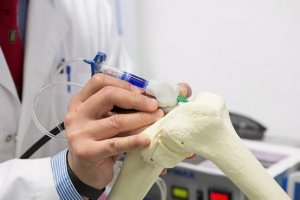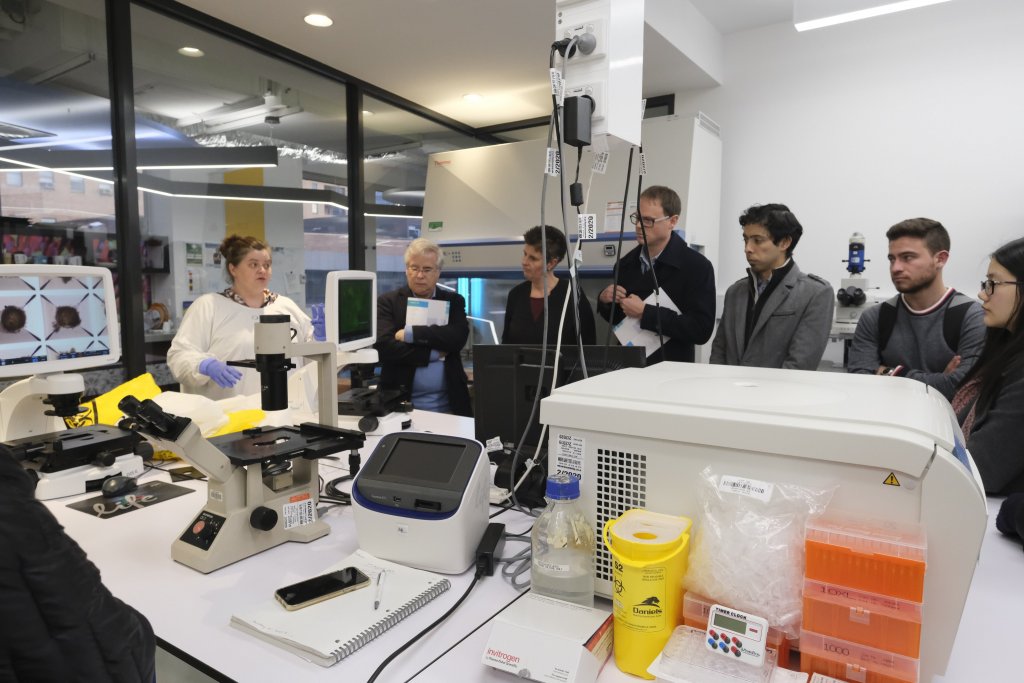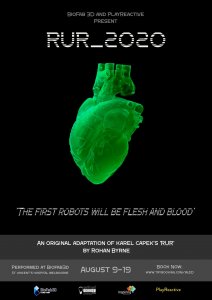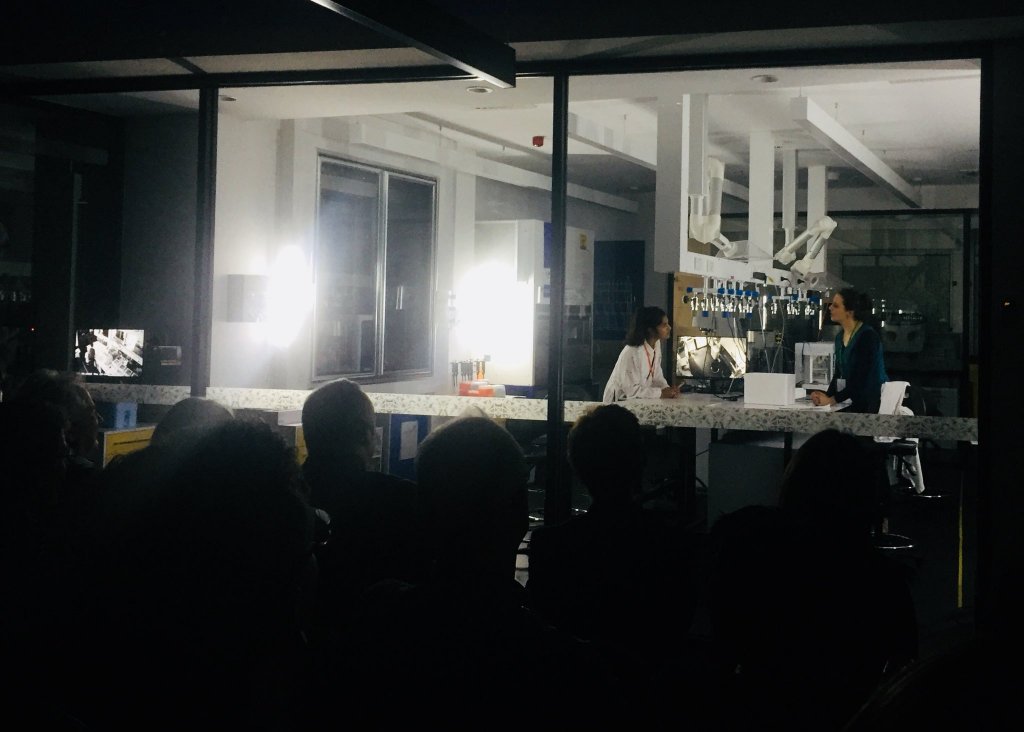The Australian 3D bioprinting community is growing. Thanks to their pioneering technological innovations, collaborations between researchers and healthcare, and support from government initiatives, advances in biotechnology may make manufacturing living structures a reality. 3D printing body parts is quickly becoming the next dreamt of step in organ transplantation, since harvesting stem cells from a transplant recipient and printing them into a replacement organ could help bypass complications associated with organ transplants, such as year-long waits for a suitable donor or rejection of the new organ. To this end, back in 2016, a laboratory was created to focus on building biological structures or body parts that require repair using living cells, the BioFab3D lab. Located at St Vincent’s Hospital in the Australian city of Melbourne, it is making science fiction a reality.
 BioFab3D is Australia’s first biomedical, engineering and robotics center. A not-for-profit initiative and collaboration between St Vincent’s Hospital, the University of Melbourne, Swinburne University of Technology, RMIT University and the University of Wollongong (UOW). A place where researchers, clinicians, and engineers work together to develop cell and materials science to create a new generation of prosthetic cartilage, muscle, bone, and organs for use in the treatment of trauma and disease. This may just be the type of facility that could evolve biotechnology in the Asia-Pacific region, where interest and demand for personalized biomedical innovations continue to increase.
BioFab3D is Australia’s first biomedical, engineering and robotics center. A not-for-profit initiative and collaboration between St Vincent’s Hospital, the University of Melbourne, Swinburne University of Technology, RMIT University and the University of Wollongong (UOW). A place where researchers, clinicians, and engineers work together to develop cell and materials science to create a new generation of prosthetic cartilage, muscle, bone, and organs for use in the treatment of trauma and disease. This may just be the type of facility that could evolve biotechnology in the Asia-Pacific region, where interest and demand for personalized biomedical innovations continue to increase.
Australia also has a great asset: workforce skilled in 3D biofabrication. Education and training in bioprinting have been around for quite a few years: in 2015, Australia’s UOW offered, in conjunction with online education provider FutureLearn, a free, four-week online course in bioprinting for whoever wants to learn, attracting over 30,000 people from over 145 countries to date. The course is geared towards high school seniors who may be interested in pursuing a degree in the sciences, encouraging adolescents to get into STEM careers. Also, the UOW along with other universities offered one of the first global master’s degrees in Biofabrication. The workforce is key to the development of additive manufacturing, so that future generations can advance the technology even further, achieving some of the long-term goals that scientists everywhere began targeting decades ago.
3DPrint.com spoke to Cathal O’Connell, facility manager at BioFab3D, to understand how the pioneering lab is collaborating with researchers in Australia to advance groundbreaking projects.
O’Connell reveals that BioFab3D is usually packed with researchers, clinicians, engineers and industry professionals, where a real sense of collaboration makes the research and development of innovative ideas easier.
“In the conference room, there might be a clinician discussing a project with his start-up team, while in the lab researchers are running gene analysis on cells in 3D printed tissues, looking after cells in bioreactors, bioprinting new structures, developing new materials and so on. Engineering, biology, materials science and medicine all come together. I always say the most important piece of equipment in the lab is the coffee machine. That’s where the real magic happens: emerging from the collision of disciplines, and the serendipitous meeting of minds,” described O’Connell.
BioFab3D is itself a small precursor to a much larger project, called the Aikenhead Centre for Medical Discovery (ACMD), that will be a much larger-scale version, also situated at St Vincent’s Hospital and encompassing 11 floors of research and teaching space. The ambitious initiative to create the first hospital-based and world-class health tech innovation hub in Australia is modeled after several international collaborative consortiums and hubs that have been demonstrated to accelerate the development of medical solutions to market and adoption in clinical practice thereby delivering better patient outcomes and quality of life.
One of the most renowned projects at the BioFab3D lab is a handheld cartilage printing device called the BioPen. Developed by Peter Choong, Director of Orthopaedics at St Vincent’s Hospital Melbourne, and Gordon Wallace, professor at UOW, the BioPen is filled with stem cells derived from a patient’s fat, which can create and surgically implant custom scaffolds of living material into failing joints. Much like 3D printed bones, the cartilage undergoes a process of growth and development within the body. So far it’s only been tested on sheep, but its developers hope that in future the BioPen can help to accelerate the regeneration of functional cartilage in human patients.
“Our research is tackling a range of clinical needs, particularly in orthopaedics and neurology. Ongoing projects include: 3D bioprinting muscle, studying how cells react with titanium implants, and modelling epilepsy in the dish from patient-derived cells,” said O’Connell. “Other projects are focused on developed tailored bioinks for bioprinting particular cell types. Still more are focused on improving the interface between living cells and electrodes implanted in the body. More importantly, all of our work is focused on a particular clinical question that can arise, and involves close collaboration with surgeons and doctors at the hospital.”
In order to move along with all these projects, O’Connell considers absolutely fundamental to understand cells for biomedical engineering. And not just cells or cell behavior, but the biological system as a whole.
“I think the whole field is appreciating more and more that the key to engineering new tissues is to understand the developmental process–what happens in utero when that tissue is originally formed.”
Hundreds of researchers around the globe are racing to 3D bioprint living functional organs for transplant, we repeatedly hear that this is the holy grail of biofabrication, but at BioFab3D scientists are engaging in some of the concerns of hospital patients, health afflictions and real-life problems that they consider could have shorter-term solutions.
“I am wary of giving oxygen to the idea of bioprinting organs for implantation. If that is ever possible, it will be a couple of decades away (and I suspect the final technology will have more to do with cultivating the development of organoids rather than printing cells directly). And I wouldn’t say there is one ‘final frontier’ either. There are a range of unmet needs where bioprinting can play a role. Every new treatment we develop will be a frontier, one which extends the limits of human healthspan,” detailed the expert, who has a strong background in physics and nanoscience.
There is so much research going on and labs like BioFab3D are advancing in areas like bioengineered muscle or 3D cultured neurons that mimic brain activity, so many are hoping that the pre-clinical and clinical stages advance faster. However, O’Connell claims that the process is not taking longer than expected since medical research generally progresses slowly and meticulously…which means it’s right on track.
“With R&D timelines on the order of 10 to15 years, developing any new treatment which is safe and effective is an extremely difficult thing to do! Perhaps the field of bioprinting only seems slow because there is so much media attention on it, and therefore so much expectation. In fact, the field of bioprinting is moving incredibly fast, it’s just that when you capture something at a high frame rate it appears to move in slow motion.”
With so many projects in the works, it’s no wonder that the lab is also involved with the regulations and approvals of bioprinting in Australia. According to O’Connell, members of the BioFab3D team have already been involved in discussions with the Australian Therapeutic Goods Administration (or TGA, the equivalent of the FDA in the US) around regulation of 3D printing in medicine, which also includes bioprinting. O’Connell went on to say that “regulators around the world are still figuring out the most appropriate way to deal with personalized implants.”
“Ours is a fast-moving field, so there needs to be strong communication between researchers and regulators. In fact, one of our doctoral students is a former medical device assessor with the TGA, and she is looking at this problem in depth.”
One of the main drives of the lab is to educate the next generation of biomedical engineers. Students are widely encouraged to attend the Lab and experiment along with professors. Throughout the last three years, undergraduates, masters, doctoral and even high school students have trained at BioFab3D. Actually O’Connell says that students are in the lab a lot more often than the professors!
It’s not just students and professors who are interested in the developments and innovations of the lab: many companies and NGOs have partnered with them as well. Most prominently is Stryker Corporation, which is co-funding a five-year project called Just in time implants that will combine 3D printing, robotic surgery, and advanced manufacturing to create tailored implants for patients with bone cancer.
At BioFab3D, scientists and engineers work with CELLINK Inkredible 3D bioprinters, Stratasys Objet 30Prime, David SLS-3 3D scanners, Robo3D R2 3D printer, GeSIM Bioscaffolder, and Dolomite Micropatricle Generator, along with bioreactors, like Cellec’s Perfusion Bioreactor and Ebers TC-3 Dynamic Bioreactor, systems for molecular biology.
And if you thought that was it, the researchers at BioFab3D can still astound you. Late last year, they even commissioned a local playwright (Rohan Byrne) to recreate a story which dealt with questions around 3D bioprinting of tissues and organs as part of National Science Week 2018. The play was hosted live in the lab at BioFab3D. For 10 days, actors performed at the Science laboratory a reimagined tale of the classic sci-fi play “Rossum’s Universal Robots” (R.U.R), written one hundred years ago by Karel Čapek.
O’Connell explained that Čapek’s robots were not mechanical; they were flesh and blood facsimiles of people made from a special gel-like substance. R.U.R was set (mostly) inside a factory where these ‘robots’ were fabricated.
“The BioFab3D laboratory is focused on literally ‘building body parts’ using living cells. We felt this convergence of science fiction and real science research makes this play relevant today.”
The collaborative fusion of arts and science was called RUR 2020 and is set over a ten-year period at the Talos Laboratory, where human organ transplants have become ubiquitous and synonymous with a factory assembly line. It is a multi-billion dollar corporation and the government is forced to regulate and develop a National transplant scheme. Deception and faulty organs are exposed in a news breakthrough, instigating mass demonstrations and a company meltdown. The contemporary version of the story dealt with questions around 3D bioprinting of tissues and organs, asking what would happen if bioprinted body parts become commercially available? It received positive reviews from local critics and was widely attended, with over 250 people in the audience throughout its run.
“The play dealt with some important ethical questions, such as programmed obsolescence and human enhancement. It turned out extremely well and was very well received, we even had live actors performing inside the lab itself,” said O’Connell.
BioFab3D is becoming an influential presence in the country and in the global bioprinting community, with ideas that actually seem like they will be solving some of the problems of human health pretty soon. The convergence between science, research and medicine accelerating as people from different professions come together in one place to create the future.
[Images: BioFab3D]Subscribe to Our Email Newsletter
Stay up-to-date on all the latest news from the 3D printing industry and receive information and offers from third party vendors.
You May Also Like
Profiling a Construction 3D Printing Pioneer: US Army Corps of Engineers’ Megan Kreiger
The world of construction 3D printing is still so new that the true experts can probably be counted on two hands. Among them is Megan Kreiger, Portfolio Manager of Additive...
US Army Corps of Engineers Taps Lincoln Electric & Eaton for Largest 3D Printed US Civil Works Part
The Soo Locks sit on the US-Canadian border, enabling maritime travel between Lake Superior and Lake Huron, from which ships can reach the rest of the Great Lakes. Crafts carrying...
Construction 3D Printing CEO Reflects on Being Female in Construction
Natalie Wadley, CEO of ChangeMaker3D, could hear the words of her daughter sitting next to her resounding in her head. “Mum, MUM, you’ve won!” Wadley had just won the prestigious...
1Print to Commercialize 3D Printed Coastal Resilience Solutions
1Print, a company that specializes in deploying additive construction (AC) for infrastructure projects, has entered an agreement with the University of Miami (UM) to accelerate commercialization of the SEAHIVE shoreline...




































